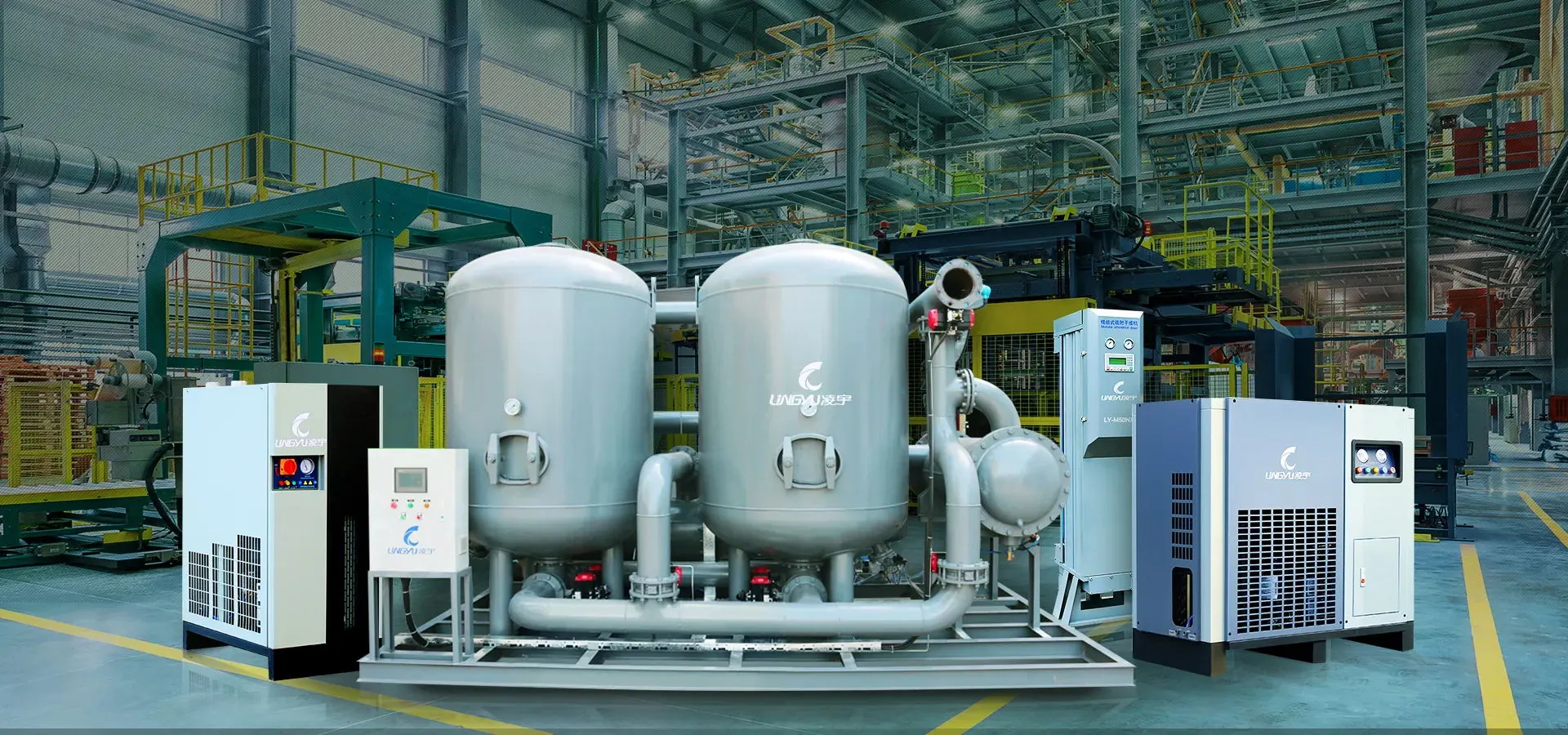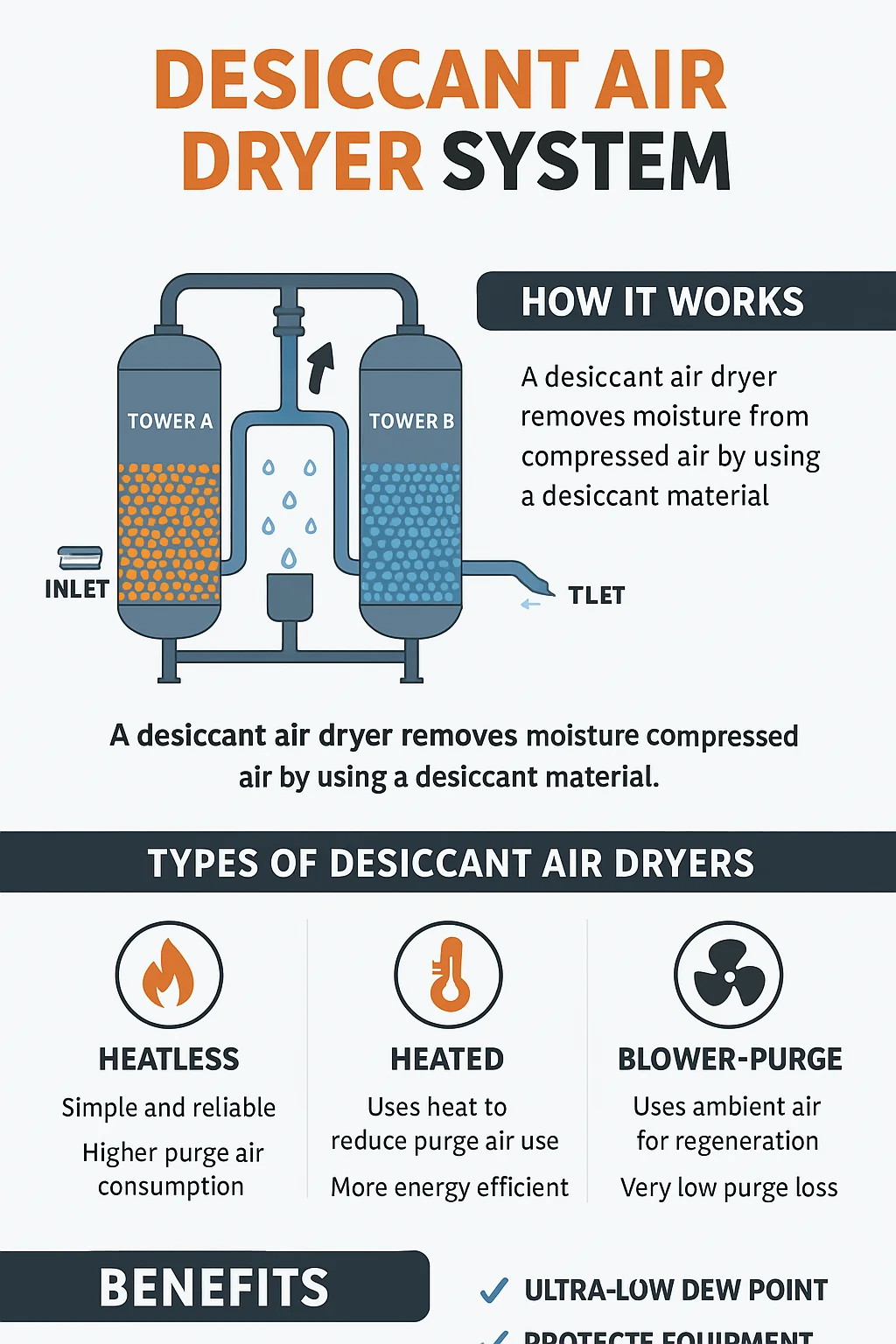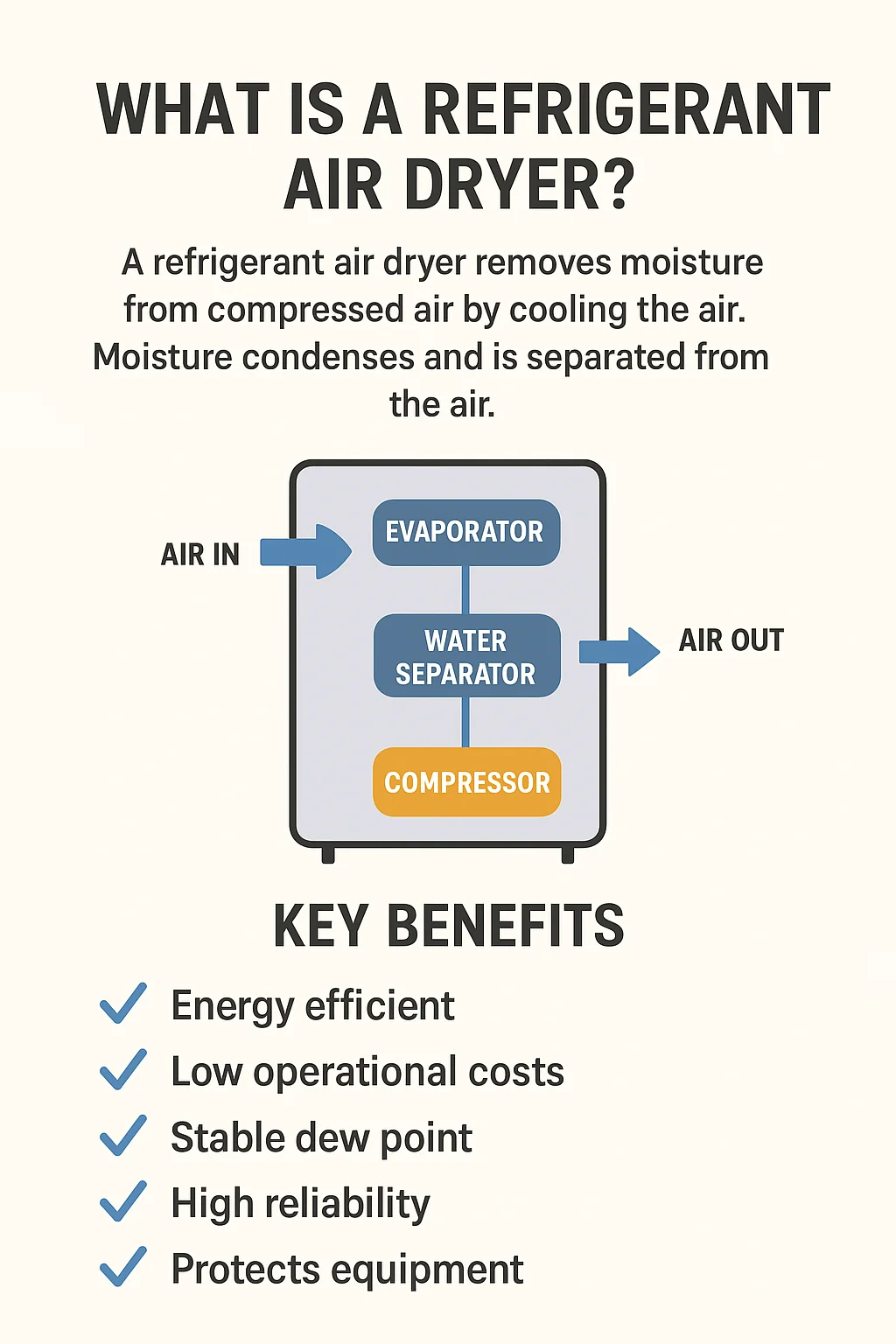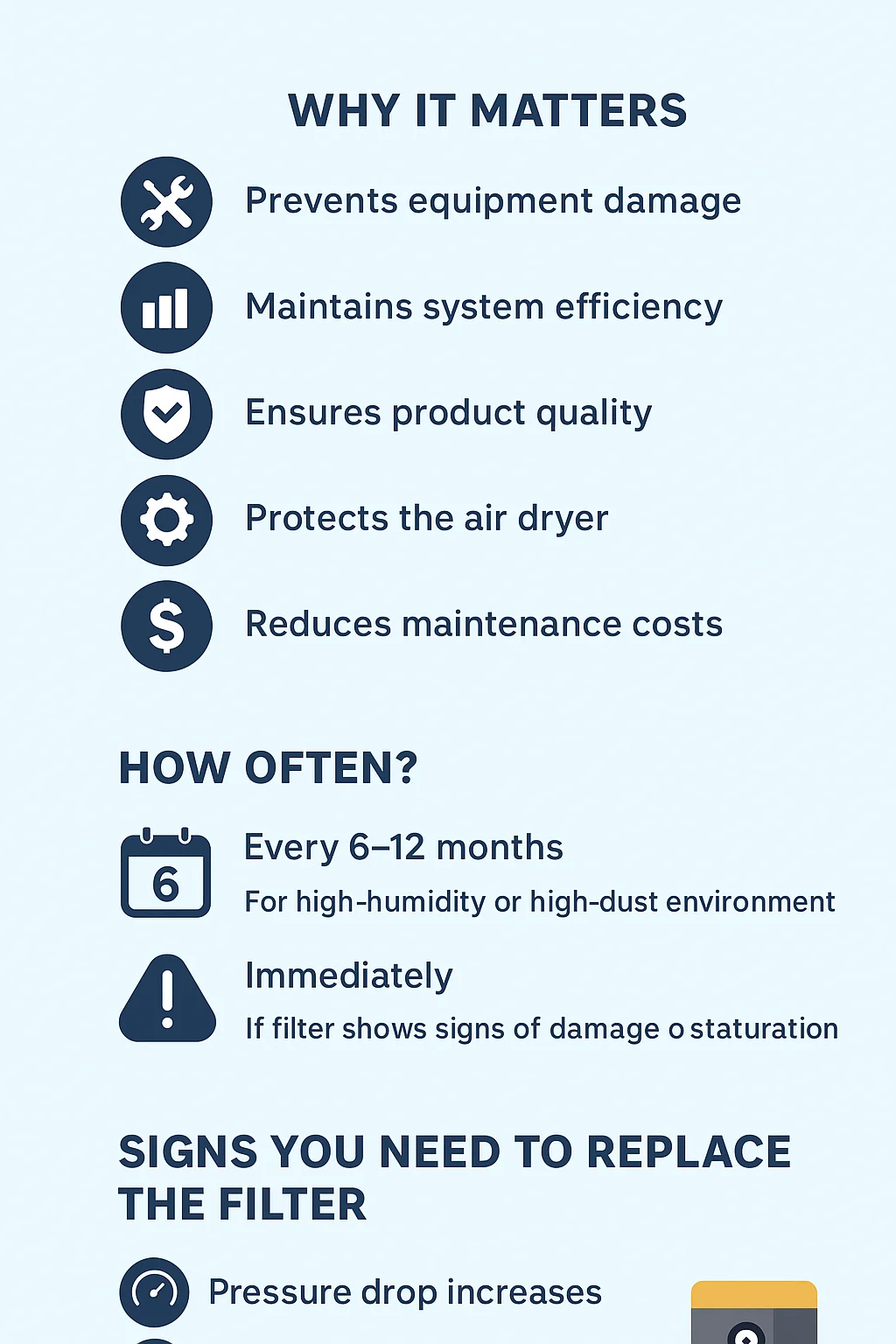If you operate a compressed air system, you already know that moisture is its enemy. Water vapor in compressed air can cause corrosion, damage sensitive tools, contaminate products, and reduce system efficiency. That’s why understanding how to select a compressed air dryer is critical for any business that relies on clean, dry compressed air.
In this guide, we’ll explain how to select a compressed air dryer step by step, covering everything from air quality requirements to energy efficiency, so you can make a confident and cost-effective choice.
Why Learning How to Select a Compressed Air Dryer is Important
Compressed air naturally contains moisture, and when compressed, the water vapor concentration increases. Without proper drying, problems like rust, pneumatic equipment failure, and production downtime are inevitable. By knowing how to select a compressed air dryer, you can:
Extend equipment life
Maintain product quality
Reduce maintenance costs
Prevent costly downtime
Step-by-Step: How to Select a Compressed Air Dryer
1. Determine Your Required Dew Point
The first step in learning how to select a compressed air dryer is identifying your moisture tolerance.
For general industrial use, a refrigerated dryer with a dew point around 3°C–5°C (37°F–41°F) is enough.
For sensitive applications like pharmaceuticals or electronics, choose a desiccant dryer with a -40°C (-40°F) or lower dew point.
2. Understand the Main Dryer Types
Knowing the types helps you decide how to select a compressed air dryer that matches your needs:
Refrigerated Air Dryers – Cost-effective, reliable for most industrial uses.
Desiccant Air Dryers – Best for very dry air requirements and cold climates.
Membrane Air Dryers – Compact, low maintenance, suitable for point-of-use.
Deliquescent Air Dryers – Simple, no electricity, ideal for remote sites.
3. Match Capacity to Your Air Compressor Output
When figuring out how to select a compressed air dryer, ensure the dryer can handle your system’s CFM (cubic feet per minute) output. Oversizing wastes energy; undersizing causes moisture issues.
4. Consider Operating Conditions
Ambient temperature, humidity, and installation location matter. For example, in hot, humid environments, you may need a larger capacity or more efficient dryer.
5. Evaluate Energy Efficiency
A major part of how to select a compressed air dryer is choosing one that minimizes energy consumption. Look for models with cycling technology or low-pressure drop designs to save on electricity.
6. Plan for Maintenance and Reliability
When selecting a compressed air dryer, think about service intervals, ease of filter replacement, and availability of spare parts.
Pro Tips on How to Select a Compressed Air Dryer
Always size for peak demand, not average use.
Consider pre-filtration to protect the dryer from oil and particulates.
Factor in future system expansion so you don’t outgrow your dryer.
Benefits of Choosing the Right Dryer
By mastering how to select a compressed air dryer, you’ll enjoy:
Consistent moisture-free air
Improved production quality
Reduced downtime and repair costs
Longer system life span
FAQ – How to Select a Compressed Air Dryer
What’s the most important factor in how to select a compressed air dryer?
Your required dew point and air quality class are the primary factors.
Can I use two dryers in series?
Yes, combining dryer types can achieve both high efficiency and ultra-low dew points.
Do I always need a desiccant dryer for high-quality air?
Not necessarily—refrigerated dryers work for most applications unless extremely dry air is needed.
How often should a compressed air dryer be serviced?
Most dryers need maintenance every 6–12 months, depending on usage and conditions.
Will a larger dryer always perform better?
No. Oversized dryers can waste energy and may not perform optimally.
Conclusion
Knowing how to select a compressed air dryer is about balancing your application’s moisture control needs with budget, operating conditions, and efficiency. By following the steps above—determining dew point, understanding dryer types, matching capacity, and considering maintenance—you can choose a dryer that keeps your air system running reliably and efficiently.
Whether your facility needs a cost-effective refrigerated model or a high-performance desiccant system, mastering how to select a compressed air dryer will save you money, protect your equipment, and keep your operations running smoothly.
Related products:
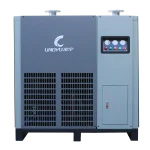
2, Wide application conditions: hydrophilic aluminum foil is used, and the wholeseries is equipped with heat exchangers and pre-coolers as standard, which canbetter adapt to harsh working conditions
3. Wide application conditions: hydrophilic aluminum foil is used, and the wholeseries is equipped with heat exchangers and pre-coolers as standard, which canbetter adapt to harsh working conditions
4. Customized according to needs: color can be customized, PLc is optional, drycontacts, Modbus communication, Internet of Things communication, etc. canbe customized according to customer needs
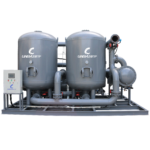
2. Energy saving -self-developed EBZ200-2 multi-core driver, compared withthe fixed cycle mode, can save more than 10% of comprehensive energyconsumption;
3, Dew point energy-saving control (optional), in the working condition ofload fluctuation, it can extend the adsorption time and reduce thecomprehensive energy consumption by more than 3096;
4. Customized high-performance adsorbent, 20% filling margin;
5. High-performance pneumatic valve, high-efficiency cooler designed byHTFS software, reliable performance and long life;

2, online real-time monitoring of nitrogen purity and flow rate;
3. long-term alarm and automatic shutdown of unqualified nitrogen;
4.automatic carbon molecular sieve compression device:
5. digital touch screen display of operating status;

